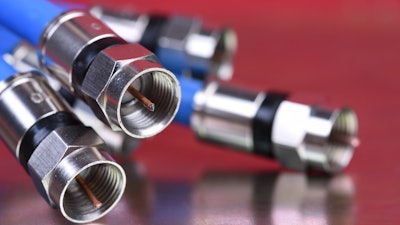
Because of the range of different applications within manufacturing, organizations may have a broad spectrum of needs from their connectors. There is rarely a one-size-fits-all solution to manufacturing challenges, but there are thousands of different types of components and connectors that can help you to meet your exact needs from an application.
It is not always easy to select the right connector without experience or expertise in their technical specifications. Choosing the wrong part for your application can cause your system to not work properly, make it less energy efficient, or even have dangerous consequences. Especially if your application has specific requirements for resistance - for example, if your production environment is at risk of fire or explosions - choosing the wrong component could put the whole system at risk.
To be sure that you select the right part for your needs, it is best to speak to an expert who can guide you through the decision-making process and make recommendations based on the specifics of your desired application. Understanding your technical requirements can help you to narrow down your search, and you will need to make a number of important decisions when selecting a component, even with the guidance of a specialist.
Here, we will outline the steps you should take to identify the type of component you need, and then to understand some of the technical information you may need to know in order to ensure that it will be suitable to the specifics of your applications, no matter which manufacturing sector you work in.
What Are Your Practical Needs?
There are several types of connectors that you may need for a manufacturing application, including for power, signals, data, and compressed air. There is a lot of variation in the available components that can complicate matters. For example, there are connectors that are suitable for multiple transmission media simultaneously, and which can be used to dramatically optimize your system if implemented correctly, but these will not be suitable for all applications.
Connectors also have different physical characteristics related to their intended function, which you should take into account when shopping for parts. The primary styles of connector are as follows:
- Circular connectors.
- Rectangular connectors.
- Power connectors.
- Sensor connectors.
- RF coaxial connectors.
- D-Sub connectors.
- Industrial RJ45 connectors
A final practical consideration is that the connector must be the right size to fit the cable you are using. Because of the complicated technical needs you must account for when purchasing components, it is easy to forget this simple aspect. Fortunately, connectors are usually available in different sizes to accommodate different applications, so you should not have trouble finding an appropriate connector in the right size.
Account for Industry Requirements
As well as functioning to transmit signals, power, data or air through a system, connectors have in-built safety functions that may be needed, depending on the nature of your application. This might include resistance to high temperatures, adverse weather conditions, explosions or other risk factors. There are components for every application, and so you should consider the risk factors that are specific to your industry and locate connectors that have the resistances you need.
If you manufacture in the food or medical industries, you will need to ensure that you select components that meet high standards of hygiene - this might include high levels of ingress protection, which can make them easier to clean - while also meeting your requirements in terms of performance and safety. All components have an IP rating that indicates the level of ingress protection they deliver, and it is worth understanding how IP ratings work when choosing connectors.
Power connectors may also be equipped with an earthing tag, which can help to prevent power surges in the event that wiring becomes loose inside a cable. Loose wiring can result in someone being electrocuted if they are nearby, as the electricity takes the fastest possible route to the ground. However, an earthing tag will neutralise the danger of electrocution by causing a surge and tripping the fuse. Depending on your application, this may be a necessary addition to your connector.
The large number of components available means that you are sure to be able to find a part that will meet your exact technical requirements. If you start by understanding exactly what you need and identifying a suitable part (or work with a technical expert to do so) you can optimise your entire system for high performance.
Scott Jones is the General Manager of Northern Connectors.























